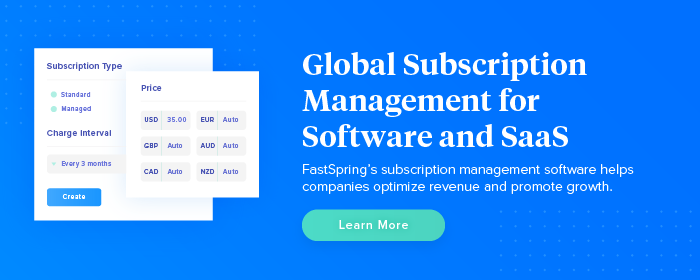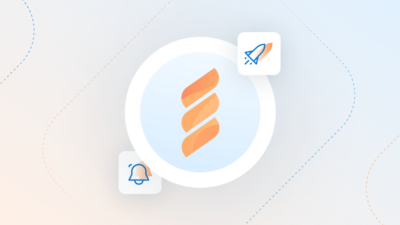SaaS Pricing can be difficult to determine for many digital businesses. First, you need to be sure that you’ve priced your product fairly, and second, you want to offer the payment option that will appeal to the largest number of users. So, do you extend a pay-per-use (or PPU) option, or do you ask people to subscribe to your service on a monthly, quarterly, or yearly basis? Additionally, how many plans should a SaaS have? It’s a tough call to make.
What Is Pay-Per-Use Billing?
With pay-per-use billing the customer makes a single purchase at a fixed price, and may or may not conduct future business with your company. Many SaaS startups launch with a fixed charge pay-per-use model, because of its simplicity. It has a straightforward revenue formula and customers like the predictability of a one-time charge.
Let’s look at the different factors that affect each pricing model so you can determine the right pricing strategy for your SaaS company.
Pay-Per-Use: When and Why?
Usage-based pricing models, like pay-per-use, certainly have their place. Many customers appreciate the affordability and flexibility pay-per-use provides, particularly when they don’t have a need to use the software more than a few times per month.
A service that’s got a relatively limited lifetime should be available to customers in a format that allows them to pay for the service only when they need to use it. Moreover, should your particular service have a material cost associated with it, PPU is a sensible way to go. If for instance, your SaaS company helps users to create and print custom t-shirts, it would just make sense to manage costs by charging for each use rather than requiring your customers to sign up and pay for a service that they might never use again.
Pay-per-use is also useful for SaaS companies who are interested in getting truly accurate feedback on their pricing strategy. Let’s say on your pricing page, you’re offering a wide variety of services across different pricing tiers. But despite the broad breadth of choices, you’re still finding that only a few customers use a handful of the services. From this behavior alone, your SaaS business can maybe infer that:
- Your pricing plans are priced too high.
- The value proposition between the plans may not be enticing enough to get users to upgrade between tiers.
- Your target customers prefer an a la carte model and would rather stay at their current tier and just pay for additional add-ons or services.
- Some buyer personas prefer certain services over others.
What’s the Story With Subscriptions?
If your digital business is just getting off the ground, having a subscription management solution can be a lifesaver. Thanks to heavy up-front customer acquisition costs, SaaS startups often struggle with cash flow issues until they recover their initial investment. Adopting subscriptions over a one-time-sales pricing model can help ensure that your SaaS business is maximizing the lifetime value of each customer you acquire. By implementing a recurring subscription billing model, businesses can easily forecast growth with the confidence that there is a loyal customer base consistently paying for their software or digital product.
Another added benefit of subscriptions is its ability to support customer retention. Canceling a service is typically perceived as a hassle, and many customers would prefer to stick with a service that’s working for them than switch to another service, even if that second service offers them a better deal. Really, the only way most SaaS companies lose subscribers is if they’re unhappy with the service, but even that’s not an insurmountable challenge. Offering a discount or a couple of months for free is usually sufficient to tempt them back, and then, as long as they are satisfied with the service going forward, you’ve got a customer for the foreseeable future. Also, because many subscription-based pricing models already have dunning management incorporate – the process of paying for services is convenient. Automatic billing functionality means users don’t have to worry about remembering to pay an invoice and your business benefits from a consistent revenue stream.
We all know that knee-jerk reaction that happens when the end-of-month invoice arrives higher than expected. Pay-per-use models can quickly spiral out of control— if someone ends up using the service more frequently than anticipated, they could be on the receiving end of quite a shock when the invoice arrives at the end of the month. Having a straight-forward subscription fee can help preserve your relationship with clients by setting clear expectations for monthly, quarterly, or yearly spend and helping to reduce these unexpected surprises.
The Bottom Line on SaaS Pricing.
When it comes to pricing your SaaS, having clear buyer personas and a deep understanding of how your target customers use your software is critical for success. Understanding how your SaaS helps solve your customer’s pain points will help your digital business make important decisions about how to price your software or service.
But If you’re still on the fence between choosing between pay-per-use or subscription-based pricing, don’t worry! The good news is that you don’t really have to choose between the two. Many SaaS companies offer both PPU and subscription services in their pricing strategy, though as a standard, you should work toward converting PPU customers into subscribers in order to maximize your revenue potential.
Interested in learning more about how a subscription management system can help grow your business revenue? Click here to download our ebook: 8 Essential Subscription Management Features.
![[Customer Story] Why TestDome Considers FastSpring a Real Partner](https://fastspring.com/wp-content/themes/fastspring-bamboo/images/promotional/2023/FastSpring-TestDome-blog-thumbnail.jpg)








